Director: Nam Nai Choi
Cast: Fan Siu Wong, Fan Mei Sheng, William Ho Ka Kui, Yukari Oshima, Tetsuro Tamba, Gloria Yip Wan Yi, Philip Kwok, Lam Suet, Frankie Chin Chi Leung
Running Time: 88 min.
By Numskull
As cult favorite Hong Kong films go, this one is pretty good… that is to say, it wasn’t as disappointing as Ronny Yu’s overblown “The Bride With White Hair”, Sammo Hung’s plodding “The Dead and the Deadly”, or Wong Jing’s abominable “Naked Killer”. I have not read the manga upon which The Story of Ricky is based, so I can’t comment on its faithfulness to the source material, but the film itself is a mildly amusing gorefest which, unfortunately, takes itself too seriously. There’s a mixture of martial arts and splatter, but not enough of the first to satisfy fans of the genre, and not enough of the second to REALLY gross out anyone who has watched Peter Jackson’s “Braindead” as often as I have. I’m not saying that the constant blood-gushing, eye-gouging, intestine-spilling, limb-severing, head-exploding carnage isn’t well done, but gore in and of itself does not a good movie make.
Ricky is a guy whose girlfriend is dead because of some heroin dealers, so he found the head honcho and punched a big hole in his head. This landed him in jail, where corporate corruption and over-the-top sadism have nullified any sense of law and order. Ricky fights back against the bullies, and a bunch of no-name inmates who can’t act worth shit make him their hero.
Normally, one doesn’t expect breakthrough performances from extras with one line apiece, but these guys take the bad acting cake and the Michael Wong-shaped candle on top of it. Every time they’re gathered together to look at something, they all wave their hands around like they’re trying to get peoples’ attention, point to whatever they’re looking at, and shoo mosquitoes away all at the same time. Point, murmur, wave, turn head, point, wave, repeat. It’s like they’re all saying: “Look. Right there. You see that? Look. Look where I’m pointing to. No, over there. Right in front of you. There. Look at that. Right there. Right where I’m pointing. Look at it. Look. Right there. You look, I’ll point. See it? Right there. Right there in front of you. I’m pointing at it right now. Right now. It’s there in front of you. Right there. Look at it. Look. Right there.” If you think I’m exaggerating, just watch the damn movie and keep your eyes on the prisoners. You’ll laugh your ass off at how much they just stand there and point and wave their hands around. Who hired these idiots? Of course, this is probably more the director’s fault, but what the hell, it’s easier to make fun of the ones you can actually see.
Anyway, things get worse when the prison warden returns from a vacation in Hawaii with his fat spoiled jackass of a son in tow, and Ricky finds himself fighting harder than ever before for his life, his freedom, and his hand-waving admirers. This brings me to the other thing about this movie that annoyed the living hell out of me. There are plenty of sadistic motherfuckers in this movie, and you can’t wait to watch Ricky butcher them one by one, but this kid is the worst of all. He wears only the dorkiest clothes, constantly stuffs his face with food, prances around like a faggot, and claps his hands and squeals with glee when people get maimed or tortured by Daddy or one of Daddy’s henchmen. Probably what Harvey Weinstein was like as a kid. From the moment he first appears, you fantasize about Ricky tearing his head off and then shoving it up his ass, or something equally crowd-pleasing. Oh, how sweet it will be to watch him die slowly and painfully at Ricky’s hands, you think. And guess what? IT. DOESN’T. HAPPEN. Every other bad guy dies some horrible death or other, BUT THIS FAT FUCK SURVIVES THE MOVIE!!! GRRRAAAAAAAAHHHHHHH!!!!!!!
Aside from THAT little turd, there’s only one other character that I would refer to as “notable”: the androgynous Huang Chan, played by Yukari Oshima, a woman, with a man’s haircut and a man’s voice (though not a very…uh, manly one). SHE is the only character who really gets to show HIS (?) fighting talents; Ricky’s fight scenes, such as they are, mostly consist of him shoving his fists through peoples’ bodies and stuff like that. This is a real letdown because Shaw Brothers/Venoms veteran Philip Kwok (aka Kuo Chui) handled the choreography; his talents were put to much better use in the sensational Brotherhood of the Wolf.
The outrageous violence is good for a few laughs, but it’s hard to take a lot of this shit seriously, and that seems to be pretty much what the film expects you to do. I mean, you can’t have a guy bursting out of his clothing like one of those space aliens in “Bad Taste” and not have people laugh. This isn’t something I would recommend to the casual viewer, but I’m sure you could come up with a good drinking game for it; chug a beer each time you see an empty eye socket, every time Ricky recovers from some horrible injury in a few seconds, and so on.
Numskull’s Rating: 6/10
By Joseph Kuby
Grievous Gore Galore!
Rikki O is somewhat of a misconstrued film.
People who dismiss this film as taking itself too seriously, are, themselves, taking the film too seriously. Considering the subject matter and the origin, you have to contemplate whether and why they expected to see a serious art house movie. It may not be a comedy but it shouldn’t be misunderstood as a failed attempt at creating pathos.
I’ll admit that the acting done by the extras leaves a lot to be desired and the script does leave a lot of lapses as far as overall logic is concerned (even for a comic book) but considering the outlandish origin of the material, of course the acting will come off as hokum and ‘B grade’ – something which this film is not. B grade is something like the live adaptation of Fist of the North Star.
The main players perform their roles with as much gusto as their script allows them to. The art design, computer effects and prosthetics are all of a high caliber so it’s a technically polished A movie with B material.
The quality of the script is no lesser than your average action film, it’s just that this film stands out because of its explicit and outlandish content. This is exploitation cinema with no pretensions.
One thing people tend to not comprehend is the reason why Ricky only fights at the last minute (or uses half of his strength) when he’s undergoing extreme duress.
It’s because he feels guilt about his girlfriend’s death at the hands of gangsters so he’s allowing himself to be punished (something which has been misinterpreted as masochism – I don’t think Ricky is that psychologically traumatized). It may come off as a somewhat demented kind of sentiment but its touching in a deranged sort of way.
Besides does anything really think a superhuman martial artist would unintentionally succumb to the ‘strength’ of an overweight warden with a hook for a hand?
Ricky is torn in a bleakly honorable dilemma. He’d rather die a quick death so he can be with his girlfriend but he knows he must live to defend his fellow man. It’s a struggle between the ego and the conscience in a way which manifests itself in glorious displays of gruesome shlock.
In a alternative way, the film is essentially an anti-suicide message. His girlfriend commits suicide so Ricky feels that the only way he can meet her is through self mutilation. However, a subconscious form of divine intervention forbids him to self harm as he’s destined to go on to much grander things before he can be reunited with the love of his life. I suppose the ideal ending for Ricky would be if he committed suicide a few seconds before he dies of old age or something.
Another ill-perceived flaw was that Ricky was laughing at the warden unintentionally due to the fact that it was played by his father Fan Mei Sheng (the long haired chubby villain who can be seen in Jackie’s Young Master and Project A 2). Within the context of the story, couldn’t he have been laughing at the old man’s attempts at intimidation?! (especially considering Ricky’s overall strength).
Maybe if the film was directed by Wong Jing (a huge fan of Japanese comics and cartoons), we’d get a better film with tighter direction and a sharp-as-shark sense of humor so that the audience would be in on the know that it’s not trying too hard to take itself too seriously. Then again, comedy is best played straight because if a tongue-in-cheek performance reveals the tongue then it destroys the intent of what it is that it’s meant to be depicting. I guess that analogy is almost like the scene where Yukari Oshima puts razorblades in Louis’ mouth and constantly slaps him (with the razorblades dangerously close to bursting through his outer cheeks).
Rikki is the Hong Kong cinematic brother of Peter Jackson’s Braindead (a.k.a Dead Alive).
But then again even that film isn’t said to be the most repugnant film of all time – stacking it up against competitors with the likes of Maniac (1980), Nightmare (1981), Scanners (1981), Day of the Dead (1985), Darkness (1993) and Premutos: The Fallen Angel (1997).
Heck, I’m not even counting one of those horrid Guinea Pig movies which Charlie Sheen accidentally hold possession of (even if they were said to be fantastically fabricated).
In regards to the fight action, the affairs of pugilistic endeavor were administrated by Philip Kwok. Beyond his Venoms catalogue, he was one of the fight choreographers for Chinese Ghost Story and Tiger Cage 2. He shot fight scenes in Police Story 3 that were so phenomenal that Stanley Tong didn’t want to lose in front of his idol Jackie. To Kwok’s dismay, his scenes were abandoned (hopefully left in cold storage than disposed of).
Phil’s design of the fights are simple like the comic with not much in the way of intricacy. I don’t mind since ornate details aren’t exactly essential for HK fights. The way the camera is placed to convey the action is what truly defines HK style action. The speed of the camera setting very much constituted the energy. Case in point, the work of Corey Yuen and Ching Siu Tung. A more direct example is the fight between Jackie and Biao in Winners and Sinners. It’s not elaborate but it’s quick and performed with a slickness that stops the choreography from looking clumsy or ineffective.
Basically, go in this film with low expectations other than seeing some of the most goriest violence displayed on camera that will alienate you more than watching John Carpenter’s The Thing (it’s that stomach-churning and heart-wrenching) and you’ll be fine.
Joseph Kuby’s Rating: 7/10
By Bentley Siu-Lung
I can not explain this completely !@#$ed-up movie! I just can’t! But, I’ll give it a shot. It is the year 2001 (and it ain’t no damn space odyssey!) and prisons have become major franchises. Ricky-O, a young martial artist, is sent to prison after killing the man responsible for his girlfriend’s death. The prison’s bullies see Ricky as just another guy until they saw what he could do… as he bashed his fists right into two of the prison’s main bullies tearing one’s stomach open and completely crushing through the other’s torso!!! This movie has everything: from decapitations to crushed heads to intestine strangling to eye popping to exploding bodies to skinning people alive to… DAMN! I could just keep going!!! But you HAVE to see this movie! This introduced category III to martial arts by bloodying the hell out of it!!! GET THIS MOVIE!!!!!!!!!!
Bentley Siu-Lung’s Rating: For those who can take it: 10/10; Weak stomached HK fans: 3/10 (Not for easy vomiters!!!!!)

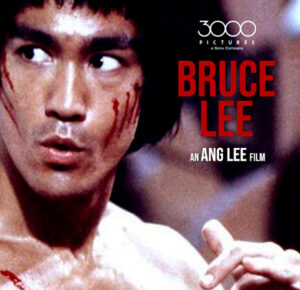
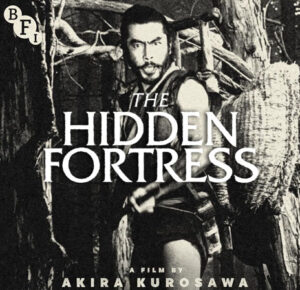
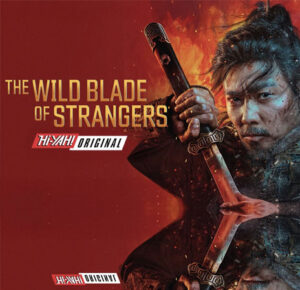
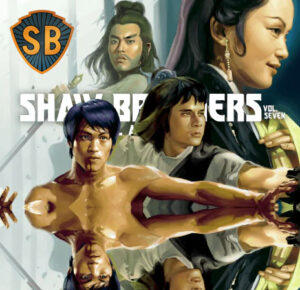
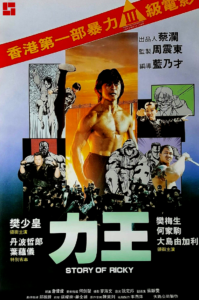
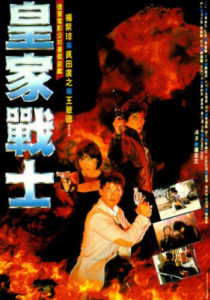








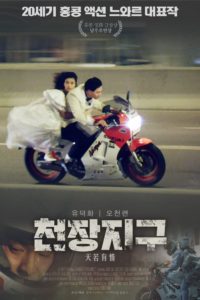



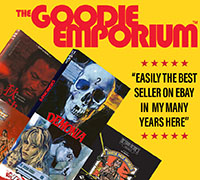
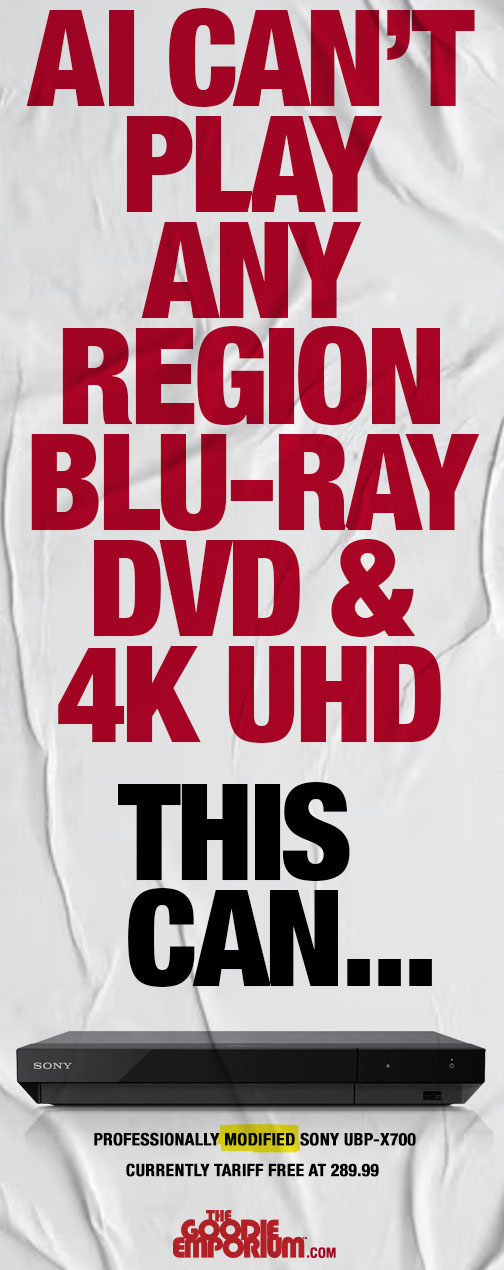
4 Comments